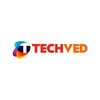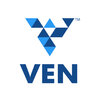Filter interviews by
Datapoint Info Solutions Software Engineer Interview Questions and Answers
Datapoint Info Solutions Software Engineer Interview Experiences
2 interviews found
I applied via Naukri.com and was interviewed in Nov 2021. There was 1 interview round.
(1 Question)
- Q1. Basic knowledge on programming and frameworks
Interview Preparation Tips
I applied via Walk-in and was interviewed in Nov 2021. There was 1 interview round.
(1 Question)
- Q1. Completely asking questions on python django
Interview Preparation Tips
Top trending discussions






Interview questions from similar companies

I applied via Recruitment Consulltant and was interviewed before Mar 2023. There was 1 interview round.
(2 Questions)
- Q1. List and tuple differences
- Ans.
List is mutable, tuple is immutable in Python.
Lists are mutable, meaning their elements can be changed after creation.
Tuples are immutable, meaning their elements cannot be changed after creation.
Lists are defined using square brackets [], tuples using parentheses ().
Lists are typically used for collections of similar items, tuples for fixed collections of dissimilar items.
- Q2. Generators in python
- Ans.
Generators in Python are functions that allow you to iterate over a sequence of items without storing them all in memory at once.
Generators are created using a function with 'yield' instead of 'return'.
They are used to generate a sequence of values lazily, one at a time.
Generators are memory efficient as they do not store all values in memory at once.
Example: def my_generator(): for i in range(5): yield i
Example: ...
Skills evaluated in this interview

I applied via Recruitment Consulltant and was interviewed before Feb 2023. There were 3 interview rounds.
JavaScript, React Js
(3 Questions)
- Q1. How many years of relevant experience
- Q2. What is your current CTC
- Q3. What is your Expectation
- Ans.
I expect a challenging role that fosters growth, collaboration, and innovation while allowing me to contribute meaningfully to projects.
Opportunities for professional development, such as workshops or courses.
A collaborative team environment where ideas are shared openly.
Involvement in innovative projects that push the boundaries of technology.
Clear career progression paths and regular feedback on performance.
(3 Questions)
- Q1. What is your Strength
- Q2. What is weakness
- Ans.
One weakness I have is that I can be overly critical of my own work, which can sometimes lead to self-doubt.
I tend to overthink things and can be indecisive at times
I have a tendency to take on too many tasks at once, leading to feeling overwhelmed
I struggle with public speaking and often get nervous in front of large groups
- Q3. What is your Goal

I appeared for an interview in Mar 2024.
(2 Questions)
- Q1. Related to oops,
- Q2. Micro services regarding

I applied via Referral and was interviewed before Oct 2021. There were 3 interview rounds.

That was 1 hour apti test with subjective questions
This was coding round with DSA. Good basic questions
Interview Preparation Tips

Software Engineer Interview Questions & Answers
QwikCilver Solutionsposted on 26 Jan 2017
I appeared for an interview before Jan 2016.
Interview Questionnaire
4 Questions
- Q1. Reason for leaving my previous company was asked...
- Q2. HR asked me to explain about role and responsibilities in my previous company to check my communication skills...
- Q3. The concerned team Manager for which I attended the interview came and interviewed me...
- Q4. The manager asked me to take any of the topic of my choice and write in brief regarding that topic....
Interview Preparation Tips
Experience: So, for the above question, I answered that I was looking for a change and better role. But, HR asked that am I not looking for a good hike in the salary (she thought I'm changing the job to get a attractive salary)... But, I repeated my answer....
Round: HR Interview
Experience: I explained completely what all managed and balanced the responsibilities in my previous company...
Round: Other Interview
Experience: He also checked my communication skills and asked few questions related to the company to check how much I'm aware of the role for which I was looking for...
Round: Other Interview
Experience: As we had to handle tasks through email comunication, the question was asked... I chose topic of poverty in India and wrote few lines of it...

Interview Preparation Tips
Experience: CV should focus on the skill set previously mentioned. Concise and to the point sentences. Line out projects and internships well. Balance between academia and extra curriculars. Attend the CV making workshop of Opera and work on it accordingly.
Tips: Don’t put things totally irrelevant to the job profile. Don’t write long sentences. Know your CV well for further stages.Anything related to your CV should be at the tip of your tongue.
Round: Test
Experience: Don’t spend a lot of time on one question in quant section. There’s a cut-off in Quant and your focus should be on clearing it. If you clear the cut-off, the puzzle section will be evaluated, where solving at least 2 is generally good enough. Puzzles are hard, and need a lot of prior practice.
Round: HR Interview
Experience: Direct selections take place at the end of all interviews after a mutual discussion between all the panels. Know your CV thoroughly. Prepare for some HR questions as well. Puzzle solving and guesstimates are asked, so prepare them well. When you are asked a puzzle, do not sit quietly but think aloud. The interviewers help you structure your thoughts. Most of the times, just knowing your approach is enough for them
Tips: Evaluate the nature of your interviewer for the first 5 minutes and if possible treat the interview like a discussion. They just want to know more about you so tell it to them. Most of them are very friendly, and you will feel at ease. Be confident. Sound excited while talking about your projects/internships. It gives them confidence in you. Be very very thorough with your CV. Nothing gives a bad impression like not knowing about yourself. Ask questions if you have them at the end of the interview.
General Tips: 1: Be Confident.
2: Keep Smiling.
3: Do not be Panic.
4: Remember they are here to hire you but not reject you.
5: Do not loose hope.
6: Believe at yourself.
7: Start preparing early.
8: Do demo interviews with your friend.
Skills: Mathematics, Computer Science
College Name: IIT KHARAGPUR
Motivation: Every body joins a comapny for making a software or earning money. But I was always motivated to MAKE MONEY. I have taken this job because they have very extensive work in Share Market and they have lots of MBA from IIM's, Lots of CAs, CS. Thats why i have choosen Edelweiss. I have rejected epic System USA for this profile.

Software Engineer Interview Questions & Answers
QwikCilver Solutionsposted on 18 Nov 2023
I applied via LinkedIn and was interviewed before Nov 2022. There were 3 interview rounds.

(1 Question)
- Q1. Leet Code Min Stack
(1 Question)
- Q1. General talk about expectations

Software Engineer Interview Questions & Answers
QwikCilver Solutionsposted on 23 Apr 2024
I applied via Naukri.com and was interviewed before Apr 2023. There were 5 interview rounds.
Aptitude test is basically logical reasoning and simple math
(1 Question)
- Q1. Basics of javascript
(1 Question)
- Q1. React life cycle methods and Redux flow
(1 Question)
- Q1. Personality assessment
(1 Question)
- Q1. Personality assessment & logical reasoning
Datapoint Info Solutions Interview FAQs
Tell us how to improve this page.
Datapoint Info Solutions Interviews By Designations
Interview Questions for Popular Designations
- Software Developer Interview Questions
- Senior Software Engineer Interview Questions
- Senior Engineer Interview Questions
- System Engineer Interview Questions
- Associate Software Engineer Interview Questions
- Project Engineer Interview Questions
- Lead Engineer Interview Questions
- Software Development Engineer Interview Questions
- Show more
Software Engineer Interview Questions from Similar Companies
Datapoint Info Solutions Software Engineer Reviews and Ratings
based on 8 reviews
Rating in categories
|
Software Engineer
15
salaries
| ₹1.8 L/yr - ₹3.5 L/yr |
|
Software Developer
10
salaries
| ₹2 L/yr - ₹4.4 L/yr |
|
Python Developer
7
salaries
| ₹1.8 L/yr - ₹4.8 L/yr |
|
Embedded Developer
7
salaries
| ₹1 L/yr - ₹3.8 L/yr |
|
Vlsi Design Engineer
6
salaries
| ₹2.8 L/yr - ₹3.2 L/yr |

Gi Group

Ven Consulting

VHS Consulting

Aneja Associates
- Home >
- Interviews >
- Datapoint Info Solutions Interview Questions









